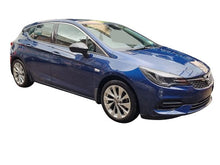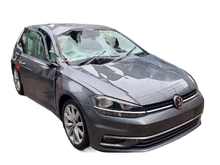
The Impact of User Experience on Tomorrow's Cars
Frequently Asked Questions
1. What is user experience in the automotive industry?
2. How does user-centered design impact car development?
3. What technological advancements are enhancing user experience in vehicles?
4. How are safety features evolving in new cars?
5. Why is environmental sustainability important in car development?
The automotive industry has undergone seismic changes in the past decade, with user experience (UX) becoming an influential factor in car development. As consumer expectations continue to evolve, so too must the strategies companies employ to remain competitive. This article explores the profound influence of user experience on the future of car development, focusing on design, technology integration, and consumer safety.
Understanding User Experience in the Automotive Context
User experience in automotive terms refers to the overall satisfaction a driver or passenger derives from the interaction with a vehicle. This encompasses everything from the feel of the steering wheel to the intuitiveness of the infotainment system. As vehicles become increasingly high-tech and integrated with mobile devices and smart technologies, understanding and enhancing this experience has never been more vital.
The Role of User-Centered Design
User-centered design (UCD) is at the heart of modern car development. UCD emphasizes putting the user at the forefront of the design process. Our understanding of what consumers want from their vehicles has changed, leading to car designs that focus on comfort, accessibility, and intuitiveness. Manufacturers conducting extensive user-testing can derive insights that shape the final product.
Aesthetic Appeal Meets Functionality
When it comes to cars, aesthetics go hand-in-hand with functionality. A well-designed vehicle not only looks good but also provides an exceptional user experience. Designers are increasingly integrating ergonomic research into the design process to ensure that every aspect of driving – from seat shape to dashboard layout – enhances comfort and usability.
Technological Integration: A Game Changer
The integration of advanced technologies plays a significant role in enhancing user experience. As cars become more connected, technology must serve a purpose beyond mere novelty. This seamless connection between human and machine redefines the relationship drivers have with their vehicles.
Infotainment Systems and Digital Cockpits
Modern cars are equipped with sophisticated infotainment systems that connect various functions. The user experience is significantly enhanced by intuitive touchscreen displays, voice recognition technology, and smartphone integration. Drivers expect to control navigation, music, and climate with ease, minimizing distraction and maximizing safety. The development of digital cockpits presents a unique opportunity for manufacturers, allowing for personalized interfaces and customizable features that cater to individual preferences.
Safety Features: Prioritizing the User
Safety has always been a priority in car development, but with advancements in technology, manufacturers are going above and beyond to ensure the user experience remains at the forefront. Features such as lane departure warnings, automatic braking systems, and adaptive cruise control contribute to a safer driving experience. Technologies such as Advanced Driver-Assistance Systems (ADAS) are making cars smarter, further boosting the level of safety and enhancing user confidence on the road.
Environmental Considerations and Consumer Preferences
As consumer awareness around environmental issues grows, the automotive industry is also adapting to create more sustainable solutions. The push for eco-friendly vehicles is not just a trend; it reflects a significant change in consumer demands, heavily affecting future car development.
Electric Vehicles (EVs) Taking the Lead
The rise of electric vehicles has marked a notable shift in user experience expectations. Consumers are increasingly aware of the environmental impact of their choices, making EVs a popular alternative to traditional vehicles. For manufacturers, this means focusing on battery life, charging infrastructure, and the overall reliability of the vehicle.
Car Sharing and Mobility Solutions
The emergence of car-sharing and ride-hailing services is another critical area influencing user experience. Consumers are seeking convenience and flexibility rather than ownership. Future vehicle designs must consider how easy it is to access and operate shared vehicles, integrating features that enhance the shared-user experience, like simplified lock/unlock systems and easy-to-follow navigation prompts.
Market Trends Shaping the Future
Keeping an eye on market trends can help manufacturers stay ahead of the curve. As we analyze the changes within consumer preferences and technological advancements, several key trends are shaping the future of automotive design and user experience.
Customization and Personalization
Today's consumers want their vehicles to reflect their personalities and lifestyles. Future car development will increasingly focus on customization and personalization options. From interior design choices to technology features—offerings that cater to specific user needs and preferences will likely enhance driver satisfaction.
The Role of Data in Shaping User Experience
Data analytics plays a crucial role in understanding consumer behavior and preferences. Car manufacturers will leverage data from connected vehicles to garner insights into how users interact with their cars. By analyzing this data, manufacturers can swiftly adapt and improve user interfaces and functionalities, creating a smarter, more user-centric experience.
The Future of User Experience in Automotive Development
As we look to the future, the impact of user experience on car development cannot be overstated. Trends toward connectivity, convenience, sustainability, and safety will shape the next generation of automobiles.
Collaboration within Industries
The automotive industry is increasingly collaborating with tech companies to ensure that vehicles are equipped with the latest innovations for user experience enhancement. This cross-industry cooperation allows for better integration of software and hardware, providing a more seamless experience for users.
Anticipating Consumer Needs
Consumer needs are ever-evolving, and manufacturers must prepare for tomorrow's complexities. The ability to anticipate and address changing expectations will be the hallmark of successful car brands moving forward. Innovations such as AI-driven features that learn driver preferences will likely become standard, contributing to a highly personalized driving experience.
Embracing the Future: What’s Next?
As we journey towards a new era in the automotive industry, it’s clear that user experience will remain at the forefront of innovation. Manufacturers that prioritize the human element in vehicle design will not only meet consumer demands but will also secure long-term loyalty. By embracing change and continually refining the experience, we can anticipate vehicles that are not only aesthetically pleasing but also functional and user-friendly.
Whether we are talking about integrating cutting-edge technologies, enhancing safety protocols, or embracing environmental sustainability, the focus must remain on the end-user experience. Today’s expectations create the foundation for tomorrow’s innovations, shaping a future where car development champions the needs and desires of every driver and passenger.
In the great drive towards innovation, staying user-focused will ensure that car manufacturers navigate smoothly through the challenges ahead, steering towards success in this dynamic industry.





















